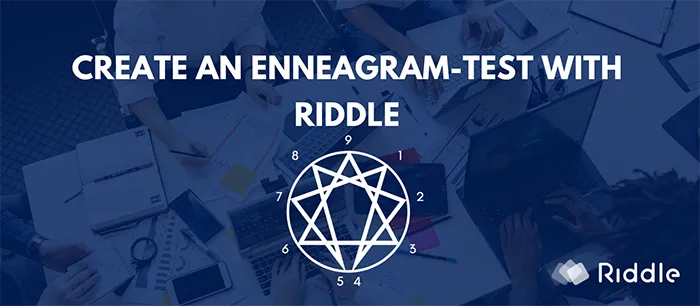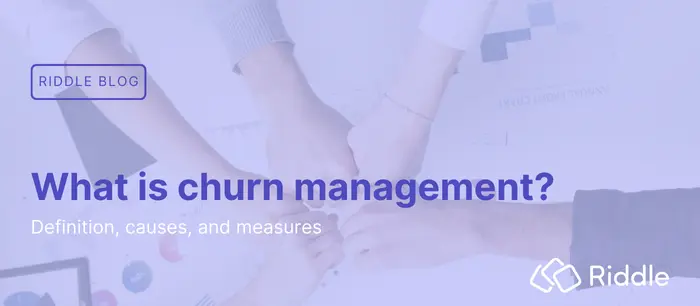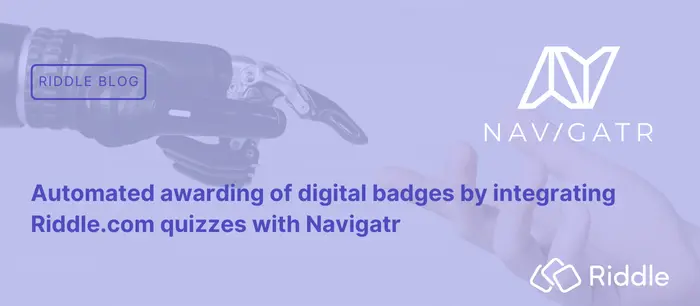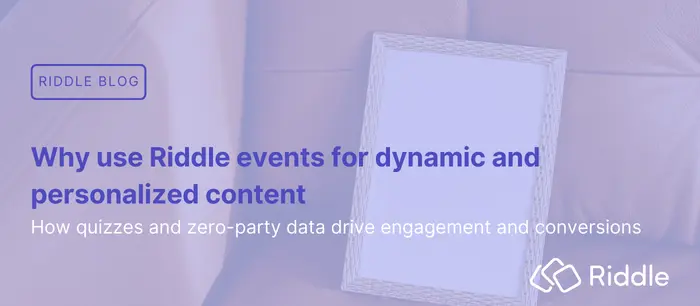Enneagram vs. OCEAN
Enneagram tests are some of the most popular types of personality tests out there. They sound a bit complicated – with nine Enneagram personality types, but we’ll show you how you can easily create your own accurate and insightful Enneagram personality test with Riddle’s online quiz maker.
Before we dive in, you might note that the Enneagram test shares a lot with the popular (and less complex) personality test concept called the OCEAN model.
The main difference is that the Enneagram returns personality ‘types’ – like the Challenger or the Achiever.
The OCEAN test returns scores based on individual personality traits – like ‘Openness to experience’ or ‘Conscientiousness’.
So, as very rough comparison – the Enneagram gives a complete picture, while OCEAN breaks this into five smaller results.
The classic Enneagram personality test
So all you trivia buffs will love learning this – an enneagram is the term for a nine-sided star polygon. (While we’re on the topic – you might know an eight-sided polygon is an octagon, but did you know an eleven-sided one is an hendecagon?)
Right, back to more serious topics. This is the symbol used for the Enneagram personality test – since there are 9 core personality traits to this model.

The Enneagram model explained
The lines inside the Enneagram also have a meaning and you should use this when crafting the description for your result types.
There are directions (lines) of integration (growth) or disintegration (stress). These 2 lines represent the personality type a person moves to when they are either under stress or in a phase of positive growth.
When creating your result types, make sure to make references to the Enneagram types that a person moves toward when feeling either stressed or in a phase of health and personal growth.
This will give your Enneagram test added accuracy and credibility to each user – they should finish your test thinking “Wow, this test really ‘got’ me!” After all, you want your test-takers to be so impressed that they’ll have confidence in your expertise.
Direction of disintegration (stress)
For example, a type 2 will move towards a type 8 (Challenger, Protector). Using our career advice test example, you could craft the user’s result saying that “While you’re a type 2 (Helper), under stress, your basic desire is influenced by self-protection as you fear being harmed, violated or controlled.”
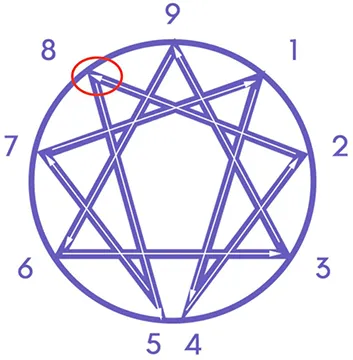
Direction of integration (growth)
The second line originating from type 2 connects with type 4 (Individualist, Romantic). One risk for a type 2 person is that in a phase of personal growth, they will overuse imagination in search of self and worry that no matter what they achieve, it won’t really matter. Basically, they can overthink things.
Enneagram personality types and OCEAN personality traits
The nine Enneagram personality types with their traits, fears and desires are:
| Type | Personality | Key traits | Frightened by | Basic desire |
|---|---|---|---|---|
| 1 | Reformer | Perfectionist, principled, honest, meticulous, fair, high expectations, ethical, critical | Appearing wrong or imperfect | Goodness, integrity |
| 2 | Helper | Generous, thoughtful, people pleaser, selfless-care | Feeling unloved | To feel loved |
| 3 | Performer | Image-conscious, drive, adaptable, loves challenges, successful, ambitious, authentic | Being worthless | To feel valuable |
| 4 | Individualist | Expressive, temperamental, romantic and idealistic in their expression, love balanced lifestyle, avoid being seen as ordinary | Having no significance | To be uniquely themselves |
| 5 | Investigator | Keen sense of perception, secretive, isolate from others, processes details quickly, quick to offer solutions and opinions | Incompetence | Mastery, understanding |
| 6 | Loyalist | Highly responsible, looks for security, playful, focus on what could go wrong, often counterproductive by bringing a negative spin | Being without support | Find support and understanding |
| 7 | Enthusiast | Prefers spontaneity to rigidity, loves new ideas, proficient problem solver, optimistic leader, inspiring others. Finds it challenging to forgive others and fears criticism | Being unfulfilled, trapped | To be satisfied and content |
| 8 | Challenger | Exudes self-confidence, self-reliant, self-assured. View themselves as powerful heroes, champion for underdogs, unafraid of confrontation but often stings with the truth | Being perceived weak or vulnerable | Self-protection |
| 9 | Peacemaker | Kind, friendly, accepting, entertaining, good listener. Skill to process multiple sides of a story, skillful mediator. Seeks harmony which leads to complacency or inaction | Loss, separation, abandonment | Wholeness, peace of mind |
The OCEAN model uses these 5 core personality traits:
- openness to experience
- conscientiousness
- extraversion
- agreeableness
- neuroticism
Key differences
The Enneagram personality test has an extra level of complexity over the OCEAN model:
- It takes into account the adjacent personality types from the circle – called wings.
- In our example, a personality type 2 (Helper) also has the personalities 1 (Reformer, Perfectionist) and 3 (Achiever, Performer) as wings.
- These wings influence the core personality type, taking into account that no one is ever just one personality type.
In the Enneagram theory, you are born with a dominant personality type that does not change throughout your life. However, that personality type will not 100% apply to you all the time – and you will also have traits of these other ‘wing’ personality types.
Usecases and Enneagram test creation
Enneagram tests are widely used both in practical arenas like business management and hiring, as well as more spiritual and self-help contexts. We’ve seen them vary in length from 30 to over 100 questions – it depends on you as the quiz creator.
While we often recommend 6-10 questions for more ‘general’ quizzes, we think 30 questions will be the minimum for an effective Enneagram test. Remember, you need to ask enough questions to collect enough data about each quiz taker – so you can confidently assign them the most accurate result from the nine Enneagram personality types.
Enneagram tests and personality quizzes are some of the most shared content online – if your quiz takers are enthusiastic about their results, they’ll share your test with their friends on social networks like Facebook.
Never created an Enneagram test? Start with an OCEAN test!
If you are new to creating personality tests, we highly recommend to start writing tests based on the OCEAN model first. These are much easier to create and provide fairly accurate results.
Creating an Enneagram test – General guide with examples
As with any personality test, you start by creating the personality results first, before creating questions.
For an Enneagram personality test, you need nine result types that match with the nine outcomes.
You could either create a classic Enneagram test and use the same result name as the Enneagram types. Or, you can come up with your own names that each share similar traits with an Enneagram type.
Example: Which career path suits your personality
Imagine you were creating a test called “Which career path best suits your personality?” – you could use the 9 Enneagram personality traits and match them to 9 corresponding jobs.
For example, personality 2 – “Helper, Giver” – has these core characteristics:
- Basic fear: to be unloved
- Basic desire: to feel loved
- Core temptation: to deny their own needs
- Virtue: humility
So for quiz takers who get ‘Personality 2’ on your test, you might show them jobs like kindergarten teacher, caregiver or nurse.
Writing questions for an Enneagram personality test
Once you got the results created, you need to come up with questions and answer options. Dust off your thinking cap – and let’s get creative!
When creating an Enneagram personality test with 9 possible outcomes, you will have to create a quiz with a minimum of 20 questions (30 is better) and 3 to 5 answer options for each question
- For every question, each answer should be associated with one or more of your result types. (Riddle uses a weighting scale to assign points for each response.)
- Make your questions situation-based – and interesting!
- Questions can either related to your test topic, but don’t be afraid to branch out. Random questions can keep your readers guessing – and interested.
Most typical Enneagram personality tests are (frankly) pretty boring. They ask predictable questions that make it easy to guess the corresponding result by how the question is written.
We highly recommend being more original when you create an Enneagram test with Riddle.
You will need to invest quite a bit of time to create the questions for your Enneagram personality test – but you will also find out that it is absolutely worth the effort.
Good and bad examples for Enneagram questions
Bad examples
Question: I’ve been
Answers:
a) romantic and imaginative
b) pragmatic and down to earth
Question: How often do you feel unloved
Answers:
a) never
b) sometimes
c) frequently
d) always
We have seen countless personality tests using this methodology for the answer options. These types of questions are often appropriate and unavoidable if you are creating a highly scientific test. This will trigger:
- Quiz fatigue – Test takers will get into the tendency of just clicking something to get through to the results.
- Audience confusion – We’ve seen many Enneagram tests use scale questions – with answers from ‘Never’ to ‘Always’. Users find it difficult to pick the most appropriate answer that describes them when options are very similar like the “Frequently” and “Sometimes”.
Good examples
Question: How do you react to critical and negative posts from your audience?
Answers:
a) I completely ignore any negative comments. I know what I am worth and trolls cannot hurt me. [This is the same as the ‘never’ answer our #2 example above.]
b) Sometimes the comments get under my skin, but I can ignore them most of the time. [‘Sometimes’ from our example.]
c) Negative comments more than annoy me, especially if there is more than one [‘Frequently’ from our example.]
d) I usually don’t even bother posting. Why open myself up to criticism and risk being slammed? [‘Always’ from our example.]
See the difference? Answering the situational question is now much more engaging. We bet you probably went through a few of your most recent posts in your head, thinking about your own reaction to negative comments. This is why situational questions get a much better and honest response – and provide more accurate results for the quiz taker.
Why should I create an Enneagram test?
While you will need to invest quite a bit of time to create the questions for your Enneagram personality test – but you will also find out that it is absolutely worth the effort.
We’ve seen a well-written Enneagram test achieve:
- High engagement rates – we see up to 87% of quiz takers finish
- Excellent lead generation opt-in rates – 45-50% of quiz takers is very doable (20-25X the internet average), especially if you promise to email them a detailed analysis based on their quiz results.
- Strong social share rates – this depends on the topic, of course. People aren’t likely to share ‘Are you depressed?’ quiz results – but personality quizzes are some of the most shared content online.
Create your own Enneagram test – a summary
Wow – that was a long article. Well done for reaching the end!
We hope you learned a lot by reading this. If you still have questions (you surely do): ask away, either with support chat or by email (hello@riddle.com).
Our whole team of coders and quiz nerds, from our cofounders Boris and Mike on down, race each other to respond to questions first.
If you want to find out more about Enneagram tests, here are some of the resources we used to write this summary:/
- Background on Enneagrams on Wikipedia
- The Enneagram Institute
- Test Guide for Enneagram tests
- Free Enneagram Test (not the best selection of questions, but a good starting point to get inspired)
